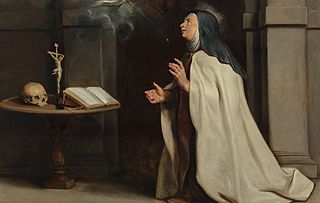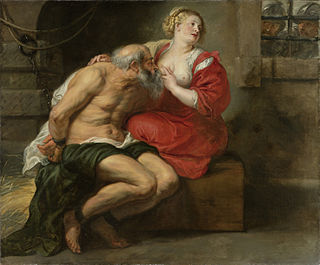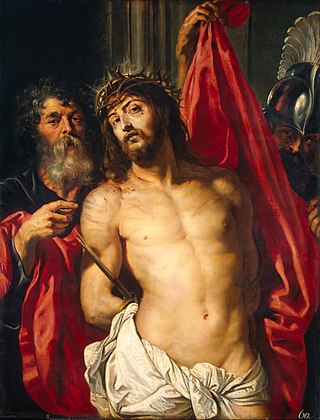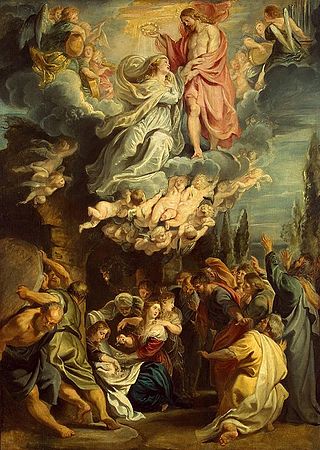
In Greek mythology, Silenus was a companion and tutor to the wine god Dionysus. He is typically older than the satyrs of the Dionysian retinue (thiasos), and sometimes considerably older, in which case he may be referred to as a Papposilenus. The plural sileni refers to the mythological figure as a type that is sometimes thought to be differentiated from a satyr by having the attributes of a horse rather than a goat, though usage of the two words is not consistent enough to permit a sharp distinction. Silenus presides over other daemones and is related to musical creativity, prophetic ecstasy, drunken joy, drunken dances and gestures.

The Bacchanalia were unofficial, privately funded popular Roman festivals of Bacchus, based on various ecstatic elements of the Greek Dionysia. They were almost certainly associated with Rome's native cult of Liber, and probably arrived in Rome itself around 200 BC. Like all mystery religions of the ancient world, very little is known of their rites. They seem to have been popular and well-organised throughout the central and southern Italian peninsula.

Guido Reni was an Italian painter of the Baroque period, although his works showed a classical manner, similar to Simon Vouet, Nicolas Poussin, and Philippe de Champaigne. He painted primarily religious works, but also mythological and allegorical subjects. Active in Rome, Naples, and his native Bologna, he became the dominant figure in the Bolognese School that emerged under the influence of the Carracci.

I Modi, also known as The Sixteen Pleasures or under the Latin title De omnibus Veneris Schematibus, is a famous erotic book of the Italian Renaissance in which a series of sexual positions were explicitly depicted in engravings.

The Palace on the Isle, also known as Baths Palace, is a classicist palace in Warsaw's Royal Baths Park, the city's largest park, occupying over 76 hectares of the city center.

Antonio Tempesta, also called il Tempestino, was an Italian painter and engraver, whose art acted as a point of connection between Baroque Rome and the culture of Antwerp. Much of his work depicts major battles and historical figures.

Sir Peter Paul Rubens was a Flemish artist and diplomat from the Duchy of Brabant in the Southern Netherlands. He is considered the most influential artist of the Flemish Baroque tradition. Rubens's highly charged compositions reference erudite aspects of classical and Christian history. His unique and immensely popular Baroque style emphasized movement, colour, and sensuality, which followed the immediate, dramatic artistic style promoted in the Counter-Reformation. Rubens was a painter producing altarpieces, portraits, landscapes, and history paintings of mythological and allegorical subjects. He was also a prolific designer of cartoons for the Flemish tapestry workshops and of frontispieces for the publishers in Antwerp.

Deodat del Monte, Deodat van der Mont or Deodatus Delmont was a Baroque painter, architect, engineer, astronomer, and art dealer who was part of the inner circle of Peter Paul Rubens.

Balthasar Moretus or Balthasar I Moretus was a Flemish printer and head of the Officina Plantiniana, the printing company established by his grandfather Christophe Plantin in Antwerp in 1555. He was the son of Martina Plantin and Jan Moretus.

Cornelis van der Geest was a spice merchant from Antwerp, who used his wealth to support the Antwerp artists and to establish his art collection. He was also the dean of the haberdashers guild.

The Feast of Venus is an oil on canvas painting by Flemish painter Peter Paul Rubens, created in 1635–1636, now in the Kunsthistorisches Museum in Vienna. It is a fanciful depiction of the Roman festival Veneralia celebrated in honor of Venus Verticordia.

Christ Giving the Keys to St. Peter is a painting by the Flemish artist Peter Paul Rubens, completed in 1614. It is now in the Gemäldegalerie in Berlin.

Saint Teresa of Ávila's Vision of the Holy Spirit is a 1612-1614 painting by Peter Paul Rubens. It is now in the Museum Boijmans Van Beuningen in Rotterdam.

Descent from the Cross is an oil-on-panel painting of 1600–1602 by the Flemish artist Peter Paul Rubens. It was his first major commissioned work made for the private chapel of Eleonora de’ Medici Gonzaga (1567–1611), duchess of Mantua. The painting remained somewhat obscure until 2005, when it was discovered by German art historian Justus Müller-Hofstede, a specialist on Rubens' early work.

Bacchus is a 1638-1640 oil painting of Bacchus by Peter Paul Rubens, now in the Hermitage Museum, in Saint Petersburg, for which it was purchased in 1772. It was originally on a panel support but was transferred to canvas in 1891 by A. Sidorov. An autograph copy of the work is now in the Uffizi in Florence.

Roman Charity is an oil on canvas painting by Peter Paul Rubens, executed c. 1612, now in the Hermitage Museum, in Saint Petersburg, for which it was bought from Koblenz's collection in Brussels in 1768. In 1828 D. A. Smitha of the Hermitage misattributed it as a copy. Later researchers agreed in 1864 and the work was placed in store until 1905, when a re-examination restored its autograph status.

Cimon and Pero is a 1630 oil on canvas painting by Peter Paul Rubens, now in the Siegerlandmuseum in Siegen. It shows a return to the subject Roman Charity, which Rubens had previously painted around 1612.

Ecce Homo or Christ Wearing the Crown of Thorns is an oil on oak panel painting of the Ecce Homo subject by Peter Paul Rubens, executed c. 1612, now in the Hermitage Museum, in Saint Petersburg. The Hermitage also houses an oil study for its figure of Pilate.

Coronation of the Virgin is a 1609-1611 oil sketch by Peter Paul Rubens, produced as a proposal for a side-chapel in Antwerp Cathedral but rejected in March 1611 and never realised as a full work, instead being reworked later for the same chapel as Assumption of the Virgin. It is now in the Hermitage Museum, in Saint Petersburg, for which it was acquired in 1722 from the F.I. Dufferin collection. It was transferred from a panel to a canvas support in 1868.
The Descent from the Cross may refer to one of several paintings by Peter Paul Rubens:



















